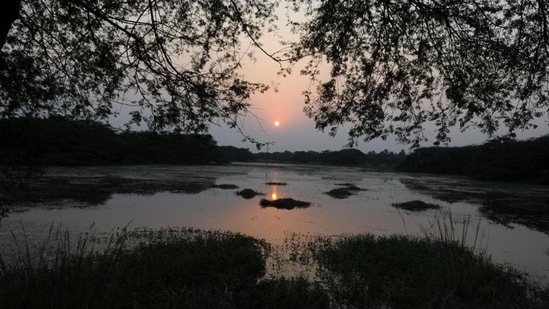World Wetlands Day: History, significance and this year's theme
Wetlands are ecosystems where water is the primary factor controlling the environment and the associated plant and animal life. They are very crucial for humans as well as planet Earth.
World Wetlands Day is observed on February 2 every year to raise global awareness about the importance of wetlands, not only for people but the planet Earth as well. The day also marks the date of the adoption of the Convention on Wetlands on February 2, 1971.

This is the first year when the World Wetlands Day will be observed as a United Nations international day, following its adoption by the UN General Assembly on August 30, 2021.
According to UN, the resolution was co-sponsored by 75 member states.
What are wetlands?
The UN defines wetlands as ecosystems where water is the primary factor controlling the environment and the associated plant and animal life.
It can be both freshwater and marine and coastal ecosystems such as all lakes and rivers, underground aquifers, swamps and marshes, wet grasslands, peatlands, oases, estuaries, deltas and tidal flats, mangroves and other coastal areas, coral reefs, and all human-made sites such as fishponds, rice paddies, reservoirs and saltpans.
Though they cover only around 6 per cent of the Earth’s land surface, 40 per cent of all plant and animal species live or breed in wetlands.
Why are wetlands important?
Wetlands provide essential ecosystem services such as water regulation, including flood control and water purification.
Dangers faced by wetlands
These wetlands, despite being critical for human survival, are disappearing three times faster than forests and are Earth’s most threatened ecosystem.
According to the UN, 35 per cent of the world’s wetlands have been lost in the last 50 years.
Human activities such as drainage, pollution, overfishing and overexploitation of resources pose a major danger to wetlands. They also face extinction by invasive species and climate change.
The Ramsar convention
The Ramsar Convention is an international treaty for the conservation and wise use of wetlands. It is named after the Iranian city of Ramsar, on the Caspian Sea, where the treaty was signed on February 2, 1971.
How many Ramsar sites are there in India?
India has 46 Ramsar sites, which include the Chilika Lake in Odisha, Keoladeo National Park in Rajasthan, Harike Lake in Punjab, Loktak Lake in Manipur and Wular Lake in Jammu and Kashmir.
These cover 7.7 lakh hectares - or 4.6 per cent of India’s geographical area - the highest in South Asia, according to a report of NGO Wetland International.
In May 2021, Sultanpur National Park and Bhindawas Wildlife Sanctuary (both in Haryana) were declared Ramsar sites.
Theme of this year’s World Wetlands Day
According to United Nations, a call to take action for wetlands is the focus of this years’ campaign.
Further explaining the theme, the website said that it is an appeal to invest financial, human and political capital to save the world’s wetlands from disappearing and to restore those we have degraded.
It calls for wetlands action for people and nature.






